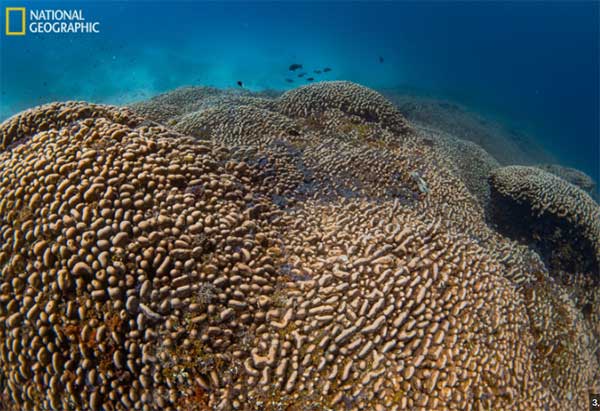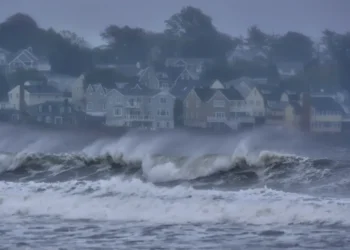World’s Largest Coral Discovered Off the Solomon Islands
LONDON — On Thursday, during an expedition around the Solomon Islands, National Geographic explorers spotted something unusual in the water that appeared to be a shipwreck. Curious, they sent a diver down to investigate.
What the diver brought back was astonishing: the object wasn’t a shipwreck, but a massive coral, later confirmed to be the largest coral in the world. This remarkable discovery, visible from space and thought to be around 300 years old, holds an invaluable record of past ocean conditions.
“Just when we think there’s nothing left to discover, we find a gigantic coral made up of nearly a billion polyps, teeming with life and color,” said Enric Sala, National Geographic Explorer in Residence and founder of the Pristine Seas expedition.
This colossal coral is three times larger than the previous record holder, “Big Momma” in American Samoa. While “Big Momma” is as tall as a giraffe, the new coral is as large as a blue whale.
The Solomon Islands, an archipelago in the South Pacific, are known for their exceptional coral diversity, with more than 490 species of coral, making it home to the second-largest diversity of corals on the planet.
Ronnie Posala, a fisheries officer with the Solomon Islands Ministry of Fisheries and Marine Resources, explained, “Corals may look like simple rocks, but they are living organisms that create these remarkable ecosystems.” He also emphasized the vital role corals play in defending coastal communities against climate change. “They act as a first line of defense, shielding against powerful waves and storms.”
Unfortunately, corals and coral reefs face severe threats due to global warming, which causes coral bleaching. UNESCO warns that coral reefs in all 29 World Heritage sites could vanish by the end of this century unless human-driven greenhouse gas emissions are drastically reduced.
Despite its remote location, this newly discovered coral is not immune to these global threats, according to Sala. “Even though it’s in a remote area, this coral still faces the impacts of global warming and other human threats,” he said.
However, there is a silver lining. Eric Brown, a coral scientist on the National Geographic expedition, sees hope in the discovery. “While nearby shallow reefs have suffered due to warmer waters, finding this large, healthy coral in slightly deeper waters is a beacon of hope,” Brown said.
This article was rewritten by JournosNews.com based on verified reporting from trusted sources. The content has been independently reviewed, fact-checked, and edited for accuracy, tone, and global readability in accordance with Google News standards.
Stay informed with JournosNews.com — your trusted source for verified global reporting and in-depth analysis. Follow us on Google News and BlueSky for real-time updates.
JournosNews.com follows Google News content standards with original reporting, verified sources, and global accessibility. Articles are fact-checked and edited for accuracy and neutrality.












